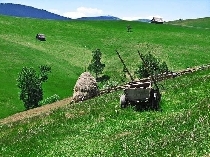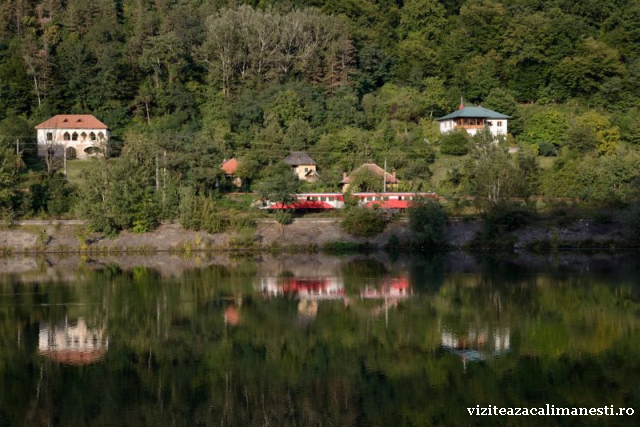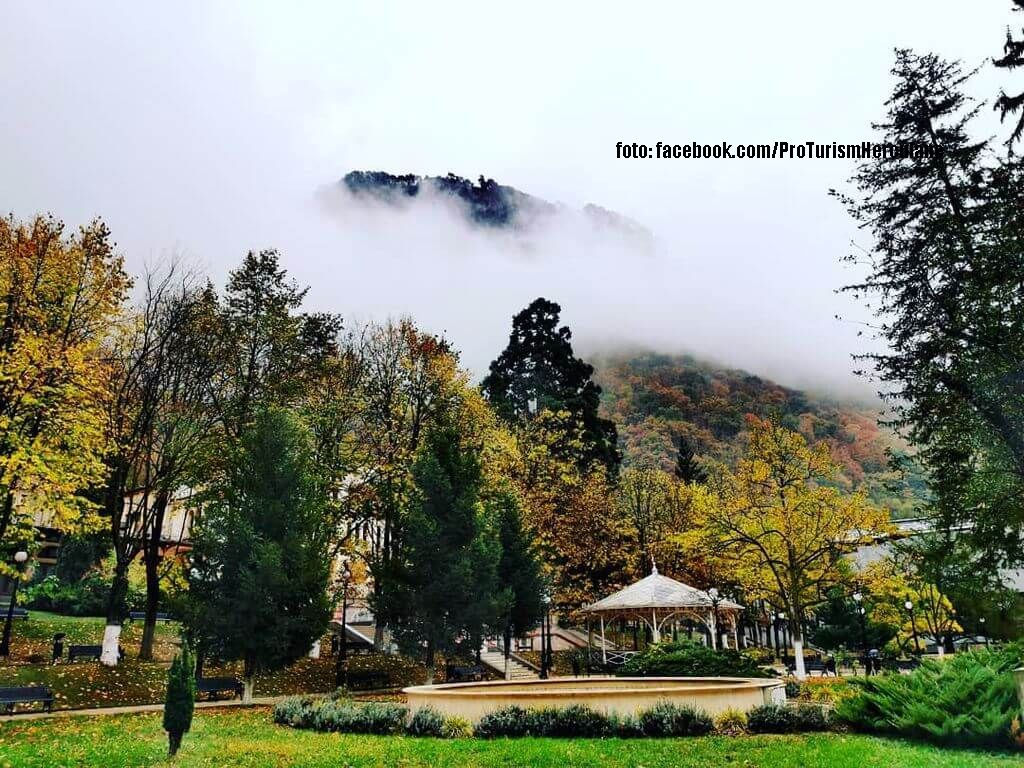Summer holiday in Sibiu County
Sibiu city witnessed an incredible development as a tourist destination in the last 10 years

Daniel Onea, 10.08.2017, 13:00
“Welcome to Transylvania. Have a pleasant stay in Sibiu, reads the sign welcoming holiday-makers to the Tourist Information Centre in Sibiu. The centre provides all kinds of information about the many activities available to tourists, from visits to museums, to international cultural events, new bicycle tracks linking the countys mediaeval villages, arts and crafts demonstrations and the local cuisine.
Speaking of cuisine, the city of Sibiu has more restaurants per 100,000 inhabitants than Amsterdam and Istanbul. With a population of 150,000, Sibiu, which is located in southern Transylvania, has around 200 restaurants. This figure reflects the citys incredible development as a tourist destination in the last 10 years, after it held the title of European Capital of Culture in 2007, something that made the city more visible abroad. More information about what the city has to offer is available at sibiu-turism.ro, which also has a page in English, says Simina Manea from the County Tourist Association:
Simina Manea: “This website promotes the countys natural and cultural diversity. From the Sibiu area visitors have access to the highest mountain ranges in Romania via two fairy-tale like mountain roads, the Transfagarasan and Transalpina. The county is also the home of fortified churches. Transylvania is well-known for these religious structures that used to play a defensive role. There are 77 fortified churches in Sibiu, two of which are on the UNESCO world heritage list. The countys ethnographic regions are unique from a historical and cultural perspective. One such area is Marginimea Sibiului, a pastoral region that preserves many of its ancient traditions. Other such regions include Tara Oltului, in the Fagaras area, at the foot of the Carpathians, and Tara Secaselor, around Ocna Sibiului. The latter used to be a mine salt dating back to the Romans. Natural lakes have formed today in place of these mines. Their water is so salty that it will keep you afloat even if you dont know how to swim, not to mention that they are extremely good for your health.
The travel packages available in the Sibiu area cater to all tastes. Simina Manea, from the County Tourist Association, tells us more:
Simina Manea: “One of our projects aims to develop thematic cultural itineraries to promote every region and its characteristics. In Marginimea Sibiului, for example, we have a programme called the Road of the Cheese. A transhumance package is also available, thanks to an international cooperation project. The latter may be done on foot or by bicycle. Entire sections of this itinerary can also be travelled by car. In the mountainous region of the Fagaras Mountains we have developed a programme called Sport in the Fagaras Mountains, addressed to people who are in good physical condition. The area is truly spectacular. It takes visitors up the Transfagarasan and to the ice lakes on top, followed by a walk along the crest of the Fagaras Mountains. An incredible view opens up of both Wallachia and Transylvania. Its spectacular. Its an area in the Carpathians I recommend strongly to foreign visitors to Romania.
The Hartibaci Valley is another fairy-tale like area in Sibiu County. It stretches between Olt River and the road linking Sibiu to the mediaeval town of Sighisoara. Traditional farming is still practised here, Simina Manea explains:
Simina Manea: “It is an area where traditional farming allowed for the preservation of a varied landscape, with a diverse flora and fauna, particularly birds, because the locals pay special attention to the environment. There we have created a tourist route known as the Road of Nature, and we try to promote the local certified eco-tourist guesthouses. It is a region that we want to develop with the support of the local community, but also with the help we get from our guests, given that many foreigners have settled here. A major advantage is the impressive Saxon heritage, with very well-preserved houses, which have been bought by young people from abroad, such as Swiss, Germans, or Italians, who have settled here.
The cyclist community in Sibiu is getting bigger and stronger, and cycling has been intensely promoted here, as a leisure opportunity but also as an alternative means of traveling. In the city of Sibiu, tourists can use cycle paths totaling 65 kilometers, starting from the outskirts and leading all the way up the center. Bikes can also be used by tourists to pedal out of Sibiu. With details on that, here is the sports program coordinator with the Sibiu County Tourism Association, Nicolae Ivan.
Nicolae Ivan: “One route starts from the spectacular Sub Arimi park, near the centre of the city and ends up in the mountains, with slight interruptions. Then the route can be continued along a roughly 11-kilometer long path built by the County Council in 2011, cutting through the Dumbrava Forest. The five main routes built by the Tura in Natura association total almost 300 kilometers, covering important areas in Sibiu, geographically speaking. Those areas are important in terms of the flora and fauna that cycling tourists can meet, but also of the cultural or historical sites in the region. For instance, there is the Saxons Road, going to Magura Cisnadiei, a 45-kilometer long route. One of the first routes in the region, Emil Cioran, towards the village of Rasinari where the writer Emil Cioran was born, is 43-kilometer long. The Salt Road is marked in the Secas Land. It links localities of the traditional road used by salt merchants. In Olt Land there is the Brukenthal route, which takes us close to Baron von Brukenthals summer residence in Avrig.“
(translated by: Cristina Mateescu)






























